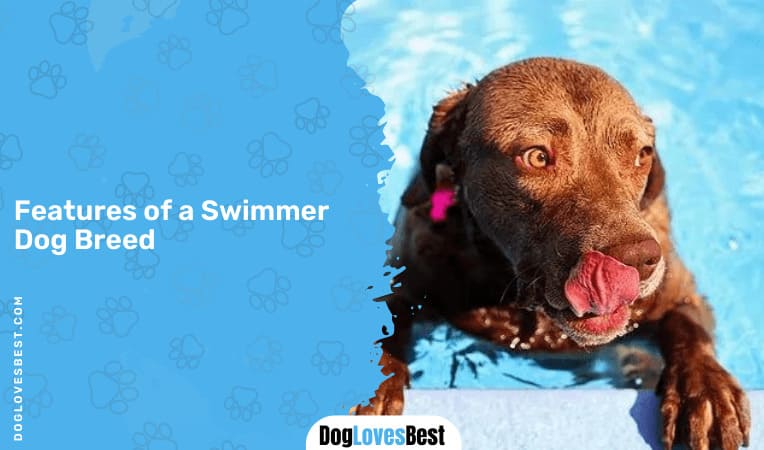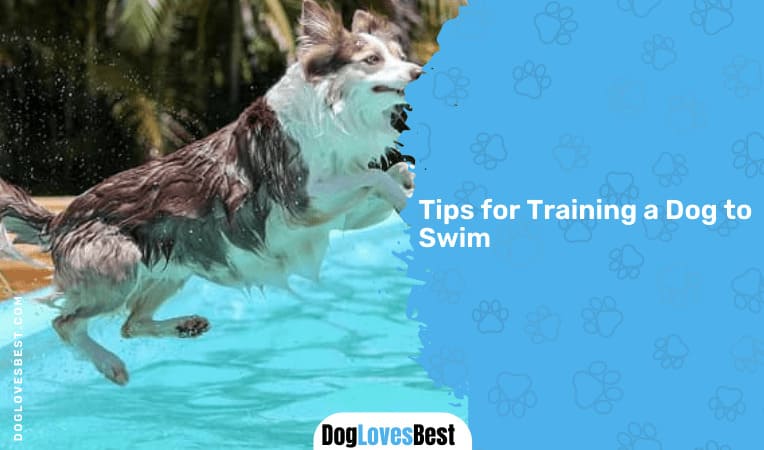The only reasonable answer to whether all dogs can swim naturally is both a yes, and no. Many dogs who were bred for the purpose of retrieving and assisting humans in hunting and fishing are known to have a natural capacity to swim.

While there are many dogs to whom although swimming does not come naturally, but can be trained into decent swimmers. There are also dog breeds who simply would not survive in water.
As much as swimming is a great activity for our lovely furry babies, do not assume your dog will start paddling into the water without any prior training, especially in the absence of an elder dog to guide them.
Do All Dogs Have the Swimming Genes?
This is a common misconception running within the pet-loving crowd of all dogs containing the natural ability or skill to swim. Although this is true to an extent, for the major part it is a false notion.
Some canines definitely have been gifted with coats and anatomy that allows them to swim through shallow as well as deep waters. However, not all dogs are capable of doing that.

However, what is the reason behind this huge variation of skills between all these dog breeds?
Get on with the article to know why some dogs cannot swim, while some of the features that make a dog breed the swimmer-kind.
Also, did you know that with the help of patience and effort, you can also teach your dog how to swim decently even if your dog is not a water-loving pooch? Get your answers in this very informative piece on dog swimming!
Why Can’t Some Dogs Swim?
The ability to swim cannot be compared with the instinct to paddle in the water, while the former is a skill, the latter can simply be a survival instinct. Many dogs have this survival instinct but are unable to wade through the waves.

We tried to understand this very complex situation though experts and this is what we have found on what some dogs can’t swim:
- Thick and Heavy Fur: This is but a reality. Your dog’s ability to swim may be discouraged by nothing else but the kind of fur they carry. Swimming requires a lot of effort and it is almost impossible to do it effectively if you are pushed behind with some sort of weight. This can also affect their ability to stay afloat in the water.
- Flat-Face: You must have noticed that our beloved pugs or bulldogs have a hard time getting through any sort of exercise. Well, swimming does not come to them easily either. They are known as brachycephalic breeds, and their flat or short muzzles are the root cause of this problem.
- Stubby Legs: Stubby or short legs can restrict some dog-breeds to go extend through their full potential. These types of legs can also mean they won’t last through a long stretch of water and start to struggle soon. This can put great pressure and strain on their body.
- Long Ears: Floppy ears may be an extremely cute feature for dogs to have, however, they aren’t too great for a quick swim.
- These ears can come with a large head as well, and this kind of facial structure is not suitable for helping in keeping their bodies afloat in water for a long time.
Some Dog Breeds That Cannot Swim:
- Basset Hound
- BullDog
- Dachshund
- Pug
- Boxer
Features of a Swimmer Dog Breed
Over the years, humans have bred many dogs to swim, retrieve, and hunt in the water, while some dog breeds have an innate quality to survive and splash in the water.

But what makes a dog breed able to swim in water? We have listed some of the features which can help you spot a true water-dog who you can take to the swimming sprees along with you:
- Water-Resistant Coats: Some dogs have a very natural way with the water and for some reason, they never fall sick even after a long day paddling around in the blue depths. One of the reasons this is possible is due to their semi water-resistant coats that help them shake off all the water once they’re out. This type of coat also helps them swim to greater lengths without weighing them down.
- Facial Structure: Broad skull with chiseled features assist many dogs to swim better in water. Their long faces can help them breathe better, and regain lost stamina quickly. You must have noticed how Labradors can seem to ace swimming, this ability can largely be credited to their facial structure.
- Webbed Feet: This is a feature that all water-dwellers are awarded. Webbed feet can help an animal rapidly go through water streams. While this massive water speed increasing function comes easily to water-animals, some land animals have also been gifted with this. These include some of our lovable canine friends like Retrievers, Spaniels, and Poodles!
- Long Legs: Similar to how short legs can deplete energy and stamina to swim for longer hours, long and strong legs do the absolute opposite for dogs. This feature can help many of our dogs last longer in the water and paddle through great lengths in a shorter time without tiring the pooch.
Top 5 Dog Breeds That Can Swim:
- Labrador Retriever
- Newfoundland
- Cocker Spaniel
- English Setter
- Poodle
Tips for Training a Dog to Swim
If your pooch is one of the breeds which is unable to swim naturally then worry not, there are ways you can kickstart a swimming routine for them to at least get them moving into the water.
Swimming is a great exercise and it can help many of our short-heightened and broad-chested dogs to maintain their weight. Below are some of the training tips you can incorporate to help your non-swimmer glide through tough waters:

- Choose a Safe Dog-Friendly Space
In case you have a pool installed in your backyard, you will have to find a safe, clean, and canine-friendly space to give your dog swimming lessons. There are ways you can find such spaces in your own city without going too far.
Look for dog-friendly pools, beaches, and lakes around your house and head straight toward it. Make sure to pick a body of water that is not too deep, you want to choose a shallow lake or pool where there will be no or minimal risks of drowning.
- Use Treats and Praises
You want your pooch to associate this new experience in a positive way and enjoy swimming as an activity.
To make this possible, you will be required to be equipped with all the good stuff our canines like, which are – delicious treats, affirmative phrases, and the assistance of their favorite toys.
Use these tools to effectively train them into being comfortable and use to water bodies without developing feelings of anxiety.
- Use a Dog Life Jacket
This is true for not only dogs who are still learning to swim, but also the ones who ace swimming. A dog life jacket can come handy in making sure your dog is safe no matter where they’re paddling through.
You want a life vest or jacket that is suitable according to their size and shape while making sure it carries all the necessary features like rescue handles, reflective trims, heavy-duty and ripstop fabric, and strong buckles.
- Keep Drinking Water Ready
Swimming can bring a lot of stress and strain to non-swimmer dog breeds. Make certain that you have fresh and clean drinking water around you at all times during the swimming lessons.
This is also important for all dogs, whether they are great swimmers or not.
Having fresh water in close proximity can mean they will not end up gulping down the water they are swimming in. As a pet parent, it will be your responsibility they do not to attract infections and diseases while swimming.
- Don’t Force Them
We have already established that diving, floating, and snorkeling through water does not come naturally or easily to some breeds. If you own any of these non-swimmer breeds, you are sure to face some sort of delay and trouble in training.
This calls for not losing your patience during this whole journey. At no cost must you thrust, force, or push your canine into the water as that can be lethal for your pooch.
Always be patient and remember that you are doing this for them, and their comfort must be always prioritized here.
Final Note
Many dog lovers have a notion that all dogs can swim, however, it is far from the truth. While some breeds can simply live to swim, others may have a hard time getting used to the water.
However, even if they do not have the innate attraction to floating on water, they can definitely acquire this skill with a little bit of effort and patience from your end.
Having said that, swimmers or not, all pooches are adorable and have their own special ways to add spark into our lives!
References
- How to Teach a Dog to Swim – PetMD
- Pet Pool Safety – Texas A&M University
- Summer Water Safety for Your Pet – Tufts

Karen Valenzuela is a dog behaviorist & trainer from Brooklyn, New York, and a freelancer for DogLovesBest. Karen is so much into dogs that she decided to become a dog behaviorist since she was in Middle School, and she did it too! She pursued her career as a dog behaviorist and now she’s certified through ACAAB. She has trained more than 10,000 dogs to correct their behavior and helped them develop a strong bond with their owners. In her free time, she loves to explore new ways of making the pet canine’s life more interesting and also has the ability to give those ideas the form of insightful posts.
